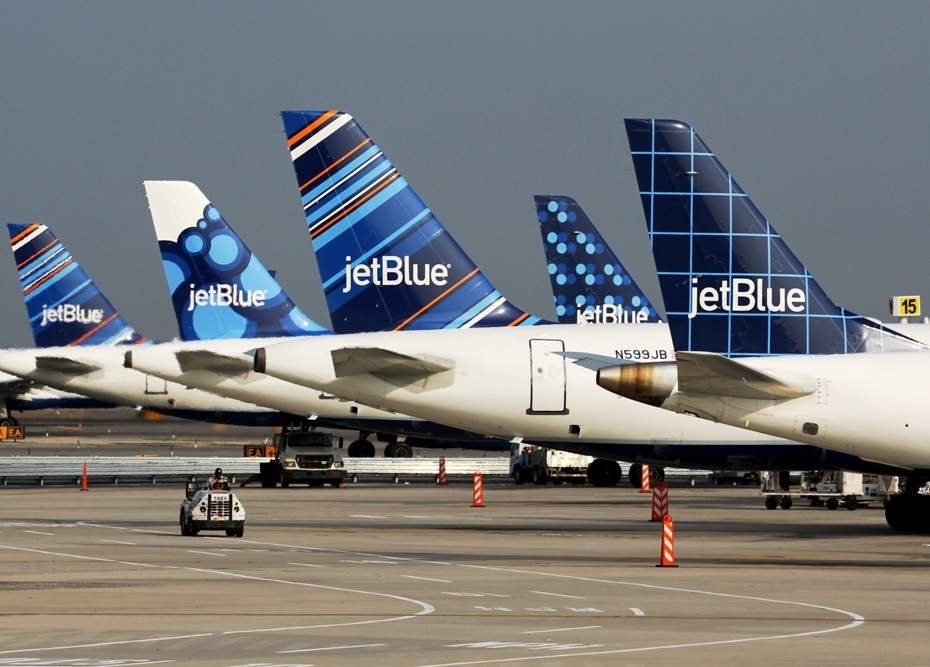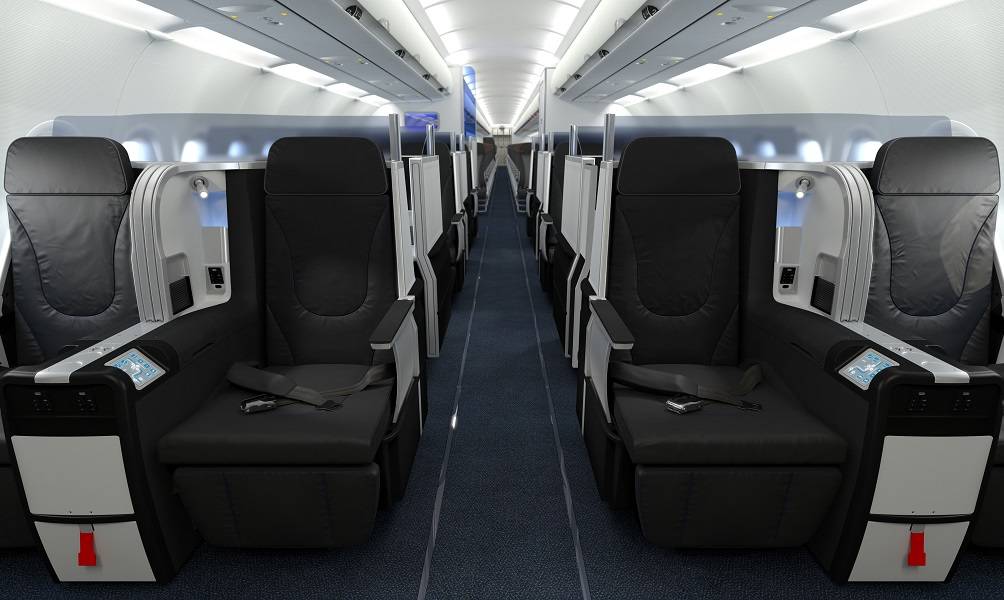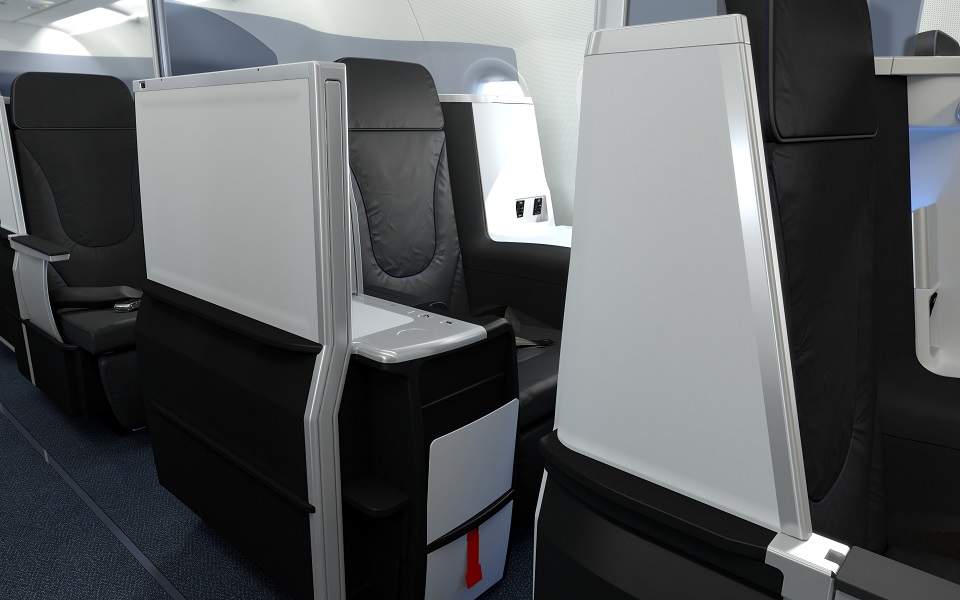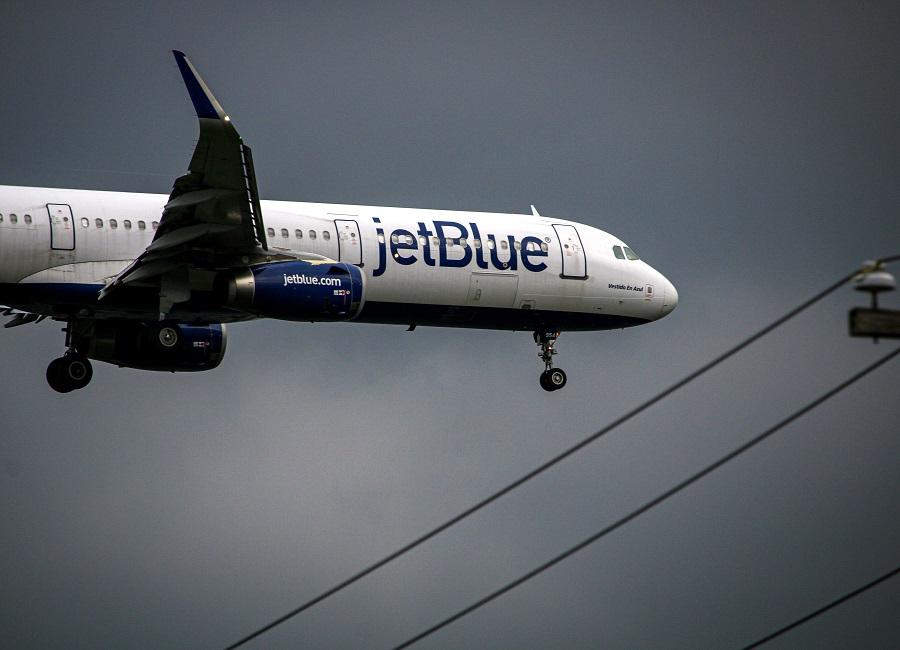With JetBlue’s planned transatlantic flights seemingly ready to go, it is becoming obvious that low-cost carrier operations are evolving. Many low-cost carriers have tried cracking the transatlantic nut before, but not this way.
We already saw that JetBlue’s efforts at transatlantic flights are aiming for the business market. The airline will use its new Airbus A321LR for these flights. The aircraft can sit 200 people in a single class configuration. But this is not the setup in JetBlue’s transatlantic aircraft. Actually, it’s not the setup they use now for several transcontinental flights in the US.

The airline launched its business-oriented ‘Mint’ service, in the middle of summer this year. Arguably, it was a good time to do it. With airlines struggling to fill seats and a policy of empty middle seats, they thought they might as well promote this product. Results seem to be good for the low-cost carrier, under the circumstances.
What is Mint
‘Mint’ is an attempt to offer affordable business class services, with lie-flat seats, in the single aisle A320 family. Some may debate on whether JetBlue really still is a low-cost carrier after this. But in a way, this is missing the point.

In an interview in the World Travel Market earlier this month. Ryanair CEO Michael O’Leary opined that Long-haul, low-cost doesn’t work for carriers. He explained:
“Ultimately long haul is a different business. Short-haul is commoditized, as long as it’s safe and it’s punctual and it’s on time, it works. The lowest cost will win. Whereas long-haul is a different model and I don’t think long-haul, low-cost works.”
The Ryanair CEO went on to explain that long-haul operations depend quite a lot on those willing to pay price premiums. This reduces the importance of savings from quick turnarounds or a basic add-on philosophy. This explains why many long-haul low-cost carrier attempts either didn’t work, or weren’t truly low-cost.
Other [Not So] Low-Cost Carrier Transatlantic Options
We have already seen carriers like Aer Lingus, who work a low-cost model on short-haul flights. But their substantial long-haul operations are closer to a traditional carrier concept. And it looks like JetBlue’s transatlantic plans are targeting exactly this kind of market.

Never mind 200 passengers, JetBlue’s A321s in transcontinental US routes have 159 seats, in the two-class ‘Mint’ configuration. Their A321LR aircraft going to London will have 138 seats. This suggests a very ‘premium heavy’ configuration. The low-cost carrier is still keen on fighting the competition on price, but now it’s for business/premium travellers. CEO of JetBlue Robin Hayes explained:
“The big opportunity for us in Europe is that we can come in, and we can significantly reduce the price. And so we actually think that will be a stimulant to getting people to fly again, because they’re going to look at this amazing product, they’re going to look at the price point and probably do a double take, thinking ‘really I’m going to get business class for that’?”
Crucially, they’re doing it all with the same planes. By contrast, when Norwegian or other low-cost carriers went long-haul, they did it with Dreamliners or A350s. If JetBlue’s Mint venture doesn’t work, they will still lose money in remodelling their interiors. But that pales into insignificance, compared to trying to offload a long-haul fleet to a lessor, for example.

So it will be interesting to see how JetBlue’s evolution of the low-cost carrier works in the transatlantic business/premium market. The airline has shaken other markets already, and they may well do it again.




2 comments
Spyros
I’ve heard it said that “Economy Plus/Extra/+/Prima/Whatever’ is basically Economy for tall people. I’m 1.84m (6′) and I think it’s a plausible explanation.
Andrew Steitz
I’m game. Economy Plus (or whatever a given carrier calls their flavor) is a joke. Business is still too expensive for me (I can afford it but don’t want to). Mint sounds like the sweet spot. Retiring soon and have family in Europe that I haven’t seen in a while.